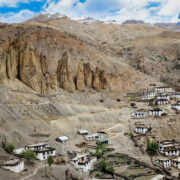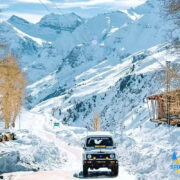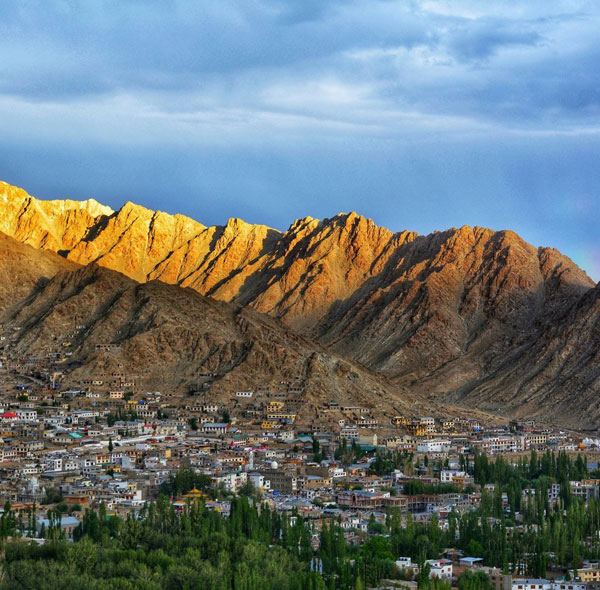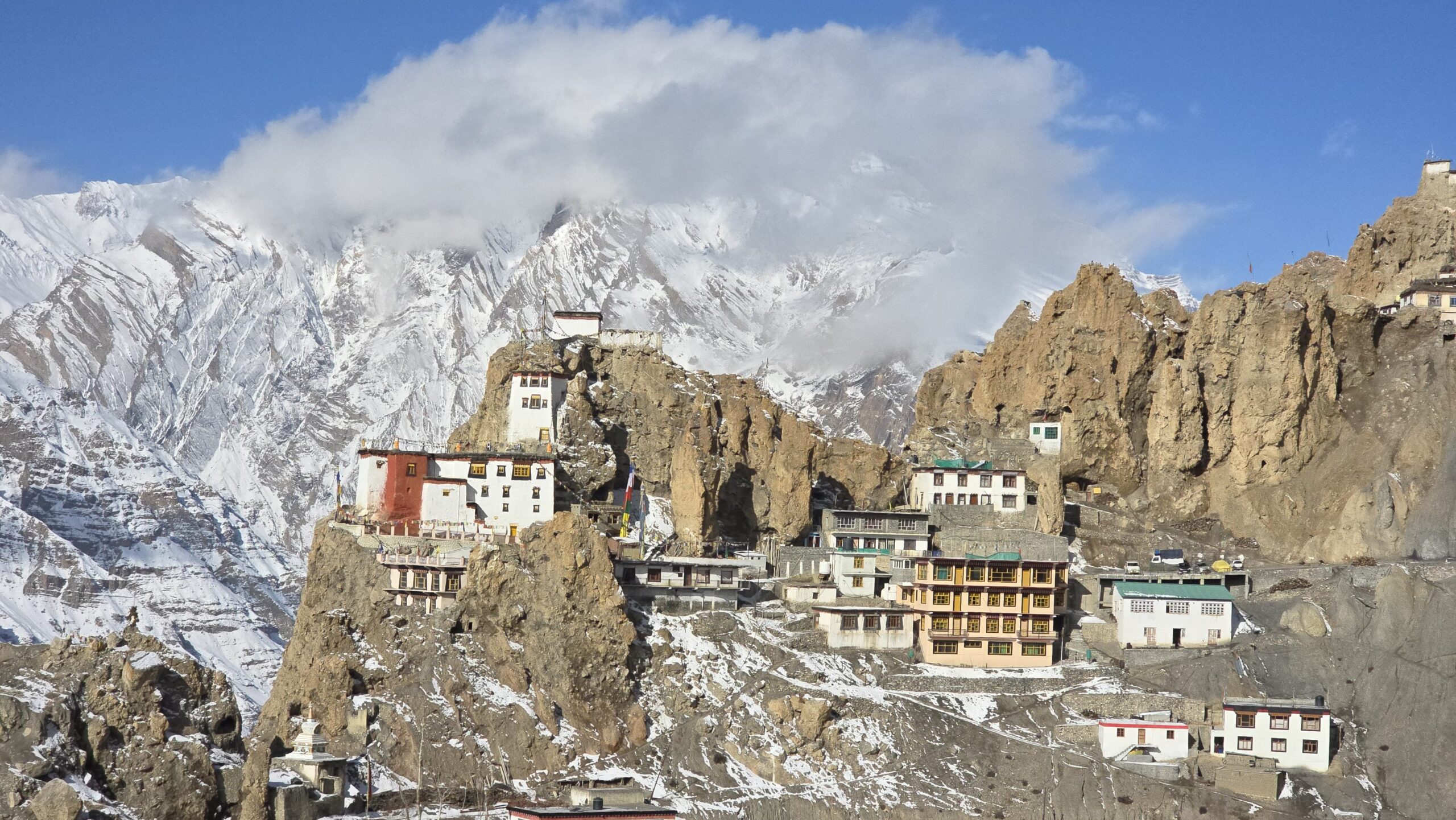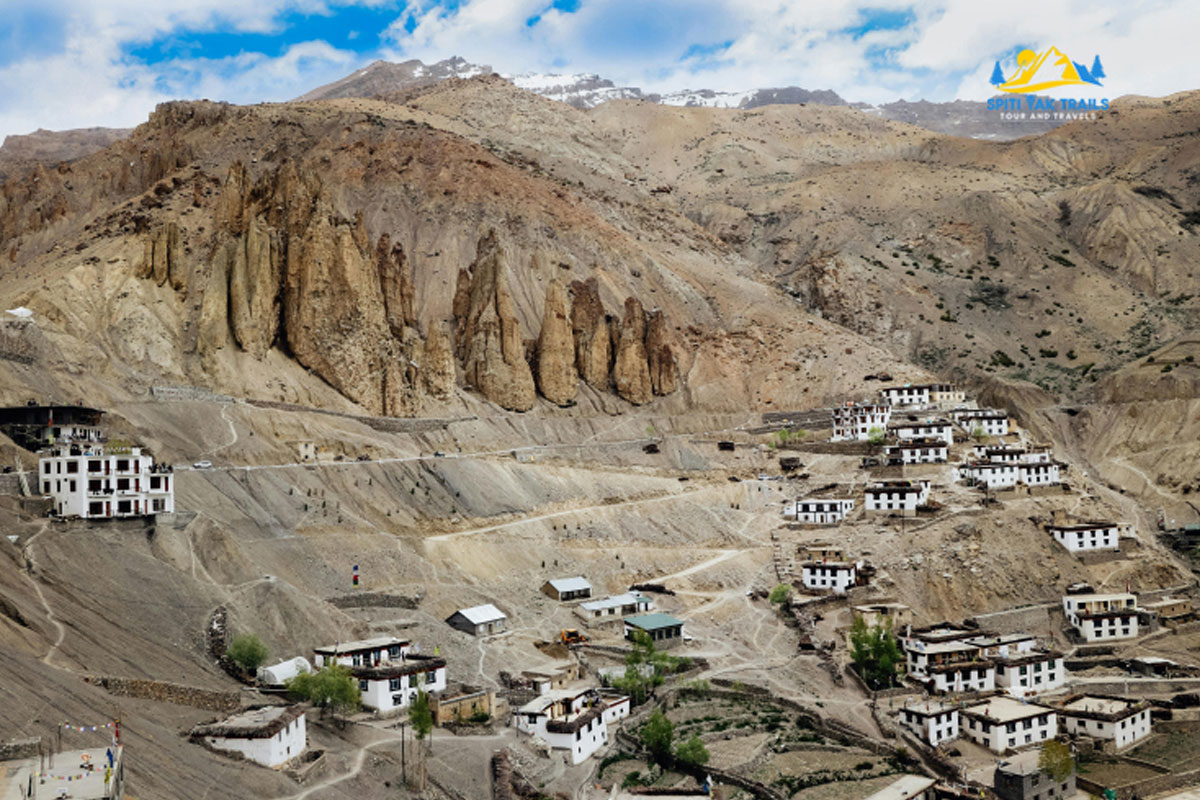
Main Attractions in Spiti Valley
Spiti Valley is a Himalayan desert mountain valley situated at an average height of 13,000 feet in the north-eastern part of the Indian state of Himachal Pradesh.
Spiti Valley is a cold mountain desert located in the rain shadow region of the Greater Himalayan ranges. It is snuggled in the north-eastern part of Himachal Pradesh.The valley is bordered by the districts of Kinnaur in the south-east, Kullu in the south, and the valleys of Zanskar and the Union Territory of Ladakh in the north. In the east, Spiti shares its boundary with Tibet (China).
Spiti Valley serves as both a research hub and a cultural center for Buddhists, drawing visitors with its unique attractions. Among its highlights is the Key Monastery, renowned as one of the world’s oldest monasteries and a personal favorite of the Dalai Lama.
Spiti Valley, a rugged paradise, lies in the majestic Himalayas where glistening lakes, ancient monasteries and snow-capped peaks form a truly iconic landscape. The Spiti Valley is one of the highest inhabited areas in the world.
Best Time To Visit Spiti Valley
The best time for adventure activities in Spiti Valley is during the summer months (March to June) when the weather is pleasant and cool. However, winter (October to April) offers a unique experience with snow-covered landscapes, ideal for experienced travelers who are prepared for sub-zero temperatures.
How To Reach Spiti Valley
By Air : The closest airport to Spiti Valley is the Bhuntar Airport, about 250 kilometres away. However, the airports remain closed in the winter, and the only way you can reach the valley is by road.
By Train : The nearest railway stations to Spiti valley are Chandigarh Railway Station (450 km from Spiti), Kalka Railway Station (420 km from Spiti), Joginder Nagar Station or Shimla Station (360 km from Spiti).
By Road : There are usually two routes to reach the valley. One is from Shimla, while the other is from Manali. The Shimla route is closed during winter. Therefore, the Manali route is the only way to reach the Spiti Valley in winter.
Attraction in Spiti Valley :
1. Key Monastery
One of the best places to visit in Spiti Valley is the Key Monastery, a religious training centre for lamas. The monastery sits at 13,668 feet and is over 1000 years old. It is home to around 250 monks, brilliant murals, and sacred scriptures. The month of June is ideal for visiting Key Monastery because the weather is pleasant, and the roads are generally open after the winter snow melts.
2. Tabo Monastery
Tabo Monasrery located at the bottom of a flat, bowl-shaped valley in Himachal’s rocky, arid, and cold areas, this monastery has been declared a UNESCO World Heritage Site. The Tabo Monastery Market is also one of the best shopping places to visit in Spiti Valley. The major attraction of the Tabo Monastery is its exquisite frescoes that are decorated on the walls and ceilings of its temples. The village is a quaint and charming place that exhibits a spiritual and peaceful ambience.
3. Lhalung Monastery
Nestled on a hill above Tupchiling village, at the sacred junction of the Bhaga and Chandra rivers, this is one of the stunning places to see in Spiti Valley. Lhalung Monastery is one of the oldest monasteries in the valley. The monastery is surrounded by beautiful mountains and is an important place for Buddhist teachings and meditation. Lhalung Valley in Spiti Valley is an adventure-filled journey, offering a Beautiful Himalayan landscape. The way to Lhalung Monastery comes from Kaza, the central town in Spiti Valley. The Best Time to Visit Lhalung Monastery is during the summer months, between May and October. During this period, the weather is pleasant, and the roads are more accessible. Lhalung Village in Spiti offers guesthouses and homestays that provide basic but comfortable facilities. Staying in one of these homestays gives you the chance to experience the local lifestyle and interact with the villagers.
4. Chandratal
Chandratal also known as Moon Lake is surrounded by dense forests and beautiful snow-capped mountains, making it the perfect setting for camping. The best part is witnessing the lake’s colours shift during sunrise and sunset, which is soul-soothing. Camping near Chandratal under the stars and skies is an experience that can’t be described in words. The road to Chandratal Lake winds through rocky terrain and high mountain passes, making the journey there in and of itself an adventure.
6. Suraj Tal
This is one of the ideal places to visit in Spiti for photographers because of its dreamlike charm when the adjoining mountains are covered in snow. Suraj Tal Lake’s immaculate and unnerving beauty is one of the principal factors as it is a popular tourist destination. Suraj Tal is situated at approximately 4,950 meters (16,240 feet) above sea level. The Suraj Tal Trek offers a unique way to experience the region’s beauty. Although you can drive almost directly to the lake, many trekkers prefer to embark on one of the trekking routes leading to Suraj Tal. These treks are often part of longer expeditions that cross the rugged landscapes of Lahaul, Ladakh, and even parts of Spiti Valley.
7. Dhankar Lake
Dhankar Lake is one of the best places in Spiti Valley for exploring the rugged terrain while indulging in adventure activities like trekking and camping. After visiting Dhankar Lake, you can come across one of the most beautiful waterfalls in India, which gets frozen during frosty winters. Situated about 2 kilometers from Dhankar Village, above the Dhankar Monastery. A peaceful and less crowded place, ideal for those seeking solitude and a connection with nature. The lake is considered sacred by locals. While the trek is moderate, it’s at a high altitude, so ensure you are physically fit.
Conclusion
Spiti Valley is a destination that leaves a lasting impression on those who visit. Its combination of natural beauty, cultural richness, and adventurous opportunities makes it a truly special place. Whether you’re seeking an escape into nature, a cultural exploration, or an adrenaline-pumping adventure, Spiti Valley has something to offer.
Frequently Asked Questions (FAQS)
Ans : Spiti Valley is famous for its stunning landscapes, ancient monasteries, vibrant Buddhist culture, and adventure opportunities like trekking and biking, making it a haven for nature lovers and thrillseekers.
Ans : No, 2 days are not enough to explore Spiti Valley. Ideally, a week is recommended to fully experience its beauty, culture, and various attractions.
Ans : The best time to visit Spiti Valley is from May to October when the weather is pleasant, and the roads are accessible, offering clear views and comfortable travel conditions.
Ans : Spiti Valley is approximately 200 kilometers from Manali, and the journey typically takes about 8 to 10 hours by road, depending on weather and road conditions.
Ans : Both Spiti and Ladakh have their unique charms. Spiti offers a more remote, tranquil experience with fewer tourists, while Ladakh is known for its larger landscapes and cultural festivals. The preference depends on individual tastes.
Ans : Indian citizens don’t need a permit, but foreign visitors will need an Inner Line Permit (ILP) to access certain areas near the Indo-Tibetan border. You can easily get these permits from the DC office in Kaza or Shimla.
Ans : Absolutely! Spiti Valley is generally safe for those traveling alone. The locals are warm and welcoming, but it’s a good idea to let someone know your travel itinerary and to pack some essentials since connectivity can be limited.
Ans : Make sure to pack warm clothing, durable trekking shoes, a firstaid kit, sunscreen, power banks, and cash, as ATMs are few and far between. Don’t forget to bring along some snacks and a refillable water bottle for those remote spots!


